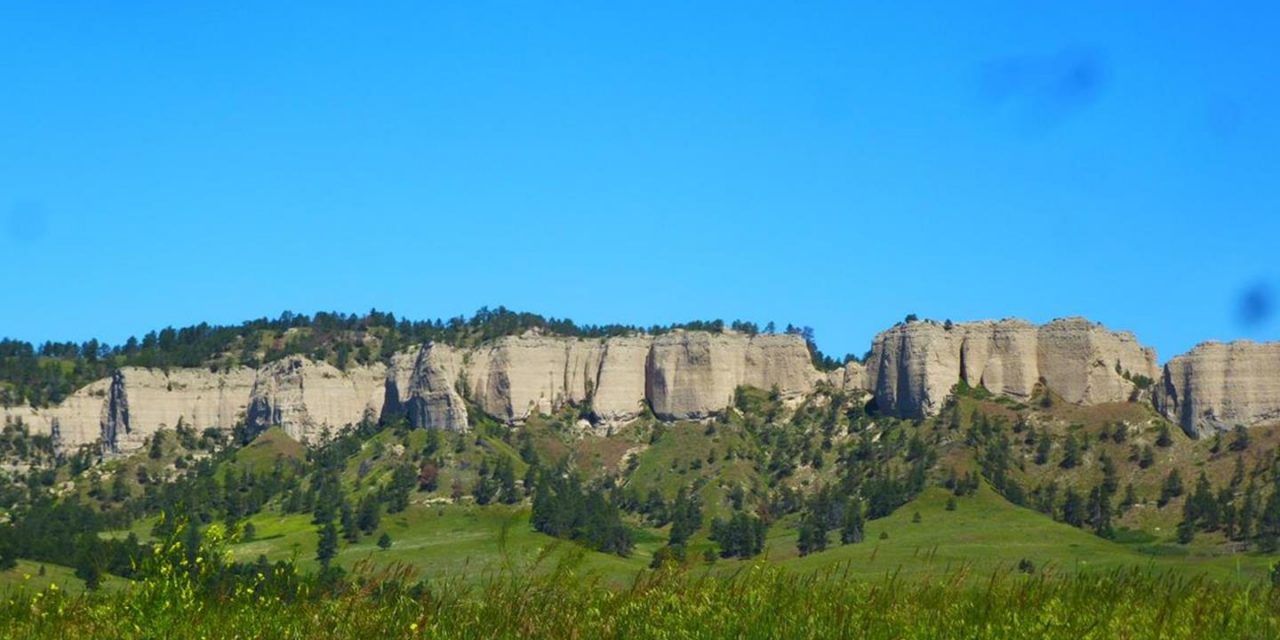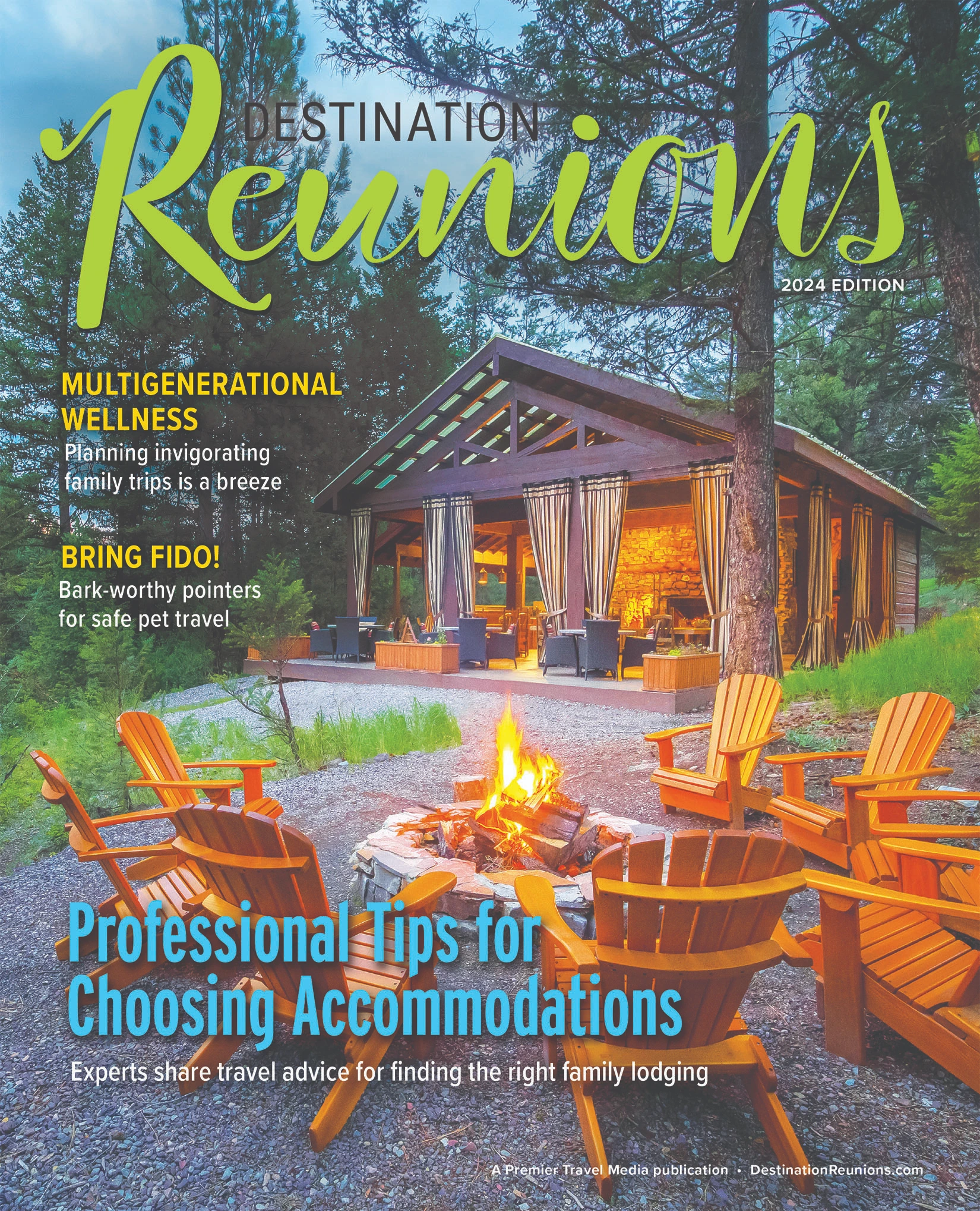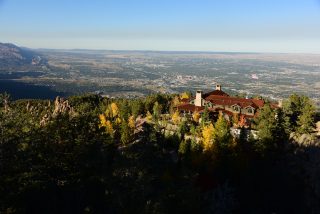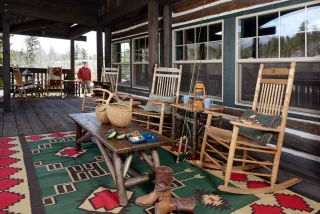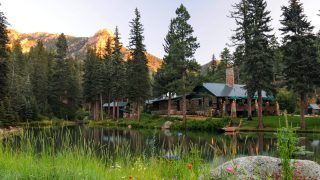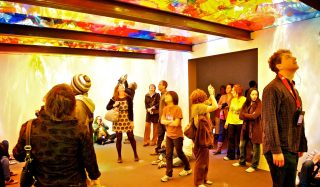When it was built in 1909, Comanche Hall served as bachelor officers’ quarters for U.S. Army personnel stationed at northwest Nebraska’s Fort Robinson, then a military installation. Today the old fort is a popular state park, and the handsome brick building houses large groups of vacationers. On my recent visit, a banner on the balcony proclaimed “Paulsen Reunion.”
Fort Robinson State Park offers not only colorful slices of frontier lore but a choice of overnight accommodations and plenty of activities to keep family, school and military reunion groups engaged. The former officers’ and enlisted men’s quarters are rustic and don’t include hotel-style amenities like toiletries, hair dryers and daily maid service. But the price is right—averaging $20-$25 per person per night.
Nebraska’s largest state park, three miles from the town of Crawford, commands a majestic setting in Pine Ridge Country, a landscape of forested buttes and ridges, canyons and grassy hills, not far from the Wyoming and South Dakota state lines. Ponderosa pine is the dominant tree on the ridges. This is not the Nebraska of endless corn fields. Western Nebraska’s Panhandle region identifies much more with the West than the Midwest. The region saw the final years of the Indian Wars, and several bands of Lakota lived there.
Lodging at Fort Robinson State Park is available from April 1 to Nov. 30, but there’s more to do between Memorial Day weekend and Labor Day, when the activity program is in full swing.
The Story of Fort Robinson
The fort began in 1874 as Camp Robinson, a military outpost established to protect the administrative headquarters of the Red Cloud Agency, which distributed food and supplies to members of the Sioux and other tribes who had been resettled on reservations. The site was re-established as Fort Robinson in 1878 with the purpose of defending white settlers and area cattle ranchers against possible Indian troubles. It became a cavalry post in 1887 and included two regiments of the all-black Buffalo Soldiers.
A few 19th century buildings remain, but most are post-1900, when the fort changed from its role as a frontier outpost to being part of a global garrison protecting American interests in places like China, the Philippines and Latin America. After the Quartermaster Remount Depot was established in 1919, the fort developed into the Army’s largest training, care and breeding center for horses and mules. It was the training site of the 1936 Olympics equestrian team. During World War II, Fort Robinson served as a war dog training site and had a German POW camp.
Known for its lively social life in the 20th century, Fort Robinson was called the “Country Club of the Army.” The calendar featured parties, polo matches, fox hunts, trail rides and steeplechases. The base had a swimming pool, baseball teams and concert bands.
Fort Robinson Activities
Horses are still very much a part of life at Fort Robinson. Besides horseback trail rides, horse-drawn wagon and stagecoach rides are available. And there are stables for those who bring their own horses. A free rodeo put on by the wranglers and their kids is staged in the arena on Thursday nights in summer.
Spotting mountain sheep is the highlight of open-air jeep rides into the wilderness. Visitors to Fort Robinson also see grazing herds of buffalo and Texas Longhorn cattle.
Other activities include hiking, mountain biking, fishing, tubing and kayaking. The Activities Building has a crafts studio, nature center and a store that sells ice cream and snacks. Also on the grounds are tennis courts, horseshoe pits and an indoor swimming pool. The nine-hole Legends Butte Golf Course is just a few miles away.
The Post Playhouse, the former quartermaster’s depot, offers nighttime entertainment from late May to mid-August. This summer’s playbill at the professional summer stock repertory theater features Rodgers & Hammerstein’s The Sound of Music, Guys & Dolls, 9 to 5, Schoolhouse Rock and My Way, a tribute to Frank Sinatra.
The Fort Robinson Museum occupies the 1905 Post Commanders Headquarters, while the Trailside Museum, operated by the University of Nebraska, interprets area geology and natural history. Reconstructed wooden buildings on the Old Parade Grounds have exhibits on fort life and Indian War battles. Outside the guardhouse on Sept. 5, 1877, the great Lakota warrior Crazy Horse died from a bayonet wound. A plaque marks the spot.
Fort Robinson Accommodations
The row of six Officers’ Quarters duplex cabins on the Old Parade Ground are the oldest buildings at the fort, dating from 1874. Sleeping six to eight, the cabins are heated and air-conditioned. They come with a bathroom and a kitchen equipped with a stove, refrigerator, microwave, coffee maker, toaster, dishes and utensils. Each unit has a picnic table and grill. Prices start at $120 per night. Nearby are two campgrounds.
When the fort expanded in 1887, a New Parade Ground was built across the road. Rimming this grassy oval are more Officers Quarters accommodations. Comanche Hall, perfect for family reunions, has 14 baths and sleeps 60; it rents for $790 per night. As with other Officers’ Quarters, there is a fully-equipped kitchen, and linens are supplied.
Also suitable for larger groups are the spacious 1909 Officers’ Quarters called the Bricks, four red-brick Victorian buildings (each divided into duplex units) with a living room, dining room and kitchen, and multiple bedrooms and bathrooms. Built as comfortable, single-occupancy brick homes with bell systems to summon servants, they have large, white-pillared porches, beautiful staircases and fancy fireplaces (not operable). The homes housed employees of the USDA Beef Cattle Research Station after the military abandoned the fort in 1948. The property became a state park in 1955.
The Bricks units sleep 14-20 and start at $205 per night. The 1887 Officers Quarters, situated on the New Parade Ground between Comanche Hall and the Bricks, are called the “Adobes.” They sleep 10 to 12 and include a living area as well as kitchen and bath ($205-$245 per night).
All Officers’ Quarters have an assortment of sleeping arrangements consisting of queen bed and bunk bed sets.
Lodge Meals at Fort Robinson
The Lodge, built in 1909 as an enlisted men’s barrack, is the focal point of the park. It offers 22 rooms with private bath ($50-$55 per night for two or three persons) and houses the Fort Robinson Inn Restaurant, which serves breakfast, lunch and dinner from Memorial Day weekend to Labor Day. The restaurant’s Western theme is carried out through the log tables and chairs, plus wall decorations like rifles, spears, saddles, chaps, portraits of Indians and photos of officers. There’s even a buffalo head.
The “Lunch in the Barracks” menu features a buffalo cheeseburger, buffalo tacos and hot buffalo sandwich with mashed potatoes and brown gravy. Breakfast favorites include biscuits and gravy and, for the heartiest of appetites, the Wrangler’s Sandwich—two plate-size pancakes stuffed with eggs and bacon, sausage or ham.
The restaurant also can cater group meals. Other meal options at Fort Robinson include chuck wagon buffalo stew cookouts and hayrack breakfast rides. The park also offers picnic shelters that can be reserved, and there are meeting facilities in several buildings.
Avid sightseers, especially those into fossils and geology, will want to make excursions to these nearby places: Toadstool Geologic Park, famous for its badlands formations; Agate Fossil Beds National Monument, which also has an impressive collection of Indian artifacts; and Hudson-Meng Education & Research Center, site of the largest extinct bison bone bed in the world. History buffs will enjoy the Museum of the Fur Trade in Chadron.
For reunion groups looking for Old West ambience at the far western edge of the Midwest, Fort Robinson State Park is the place to gather and enjoy the company of friends and family. But book early—those Officers’ Quarters sell out long before the peak season begins.
For more information, call Fort Robinson State Park at 308-665-2900 or visit the Nebraska Game and Parks Commission’s website, outdoornebraska.org.
By Randy Mink

